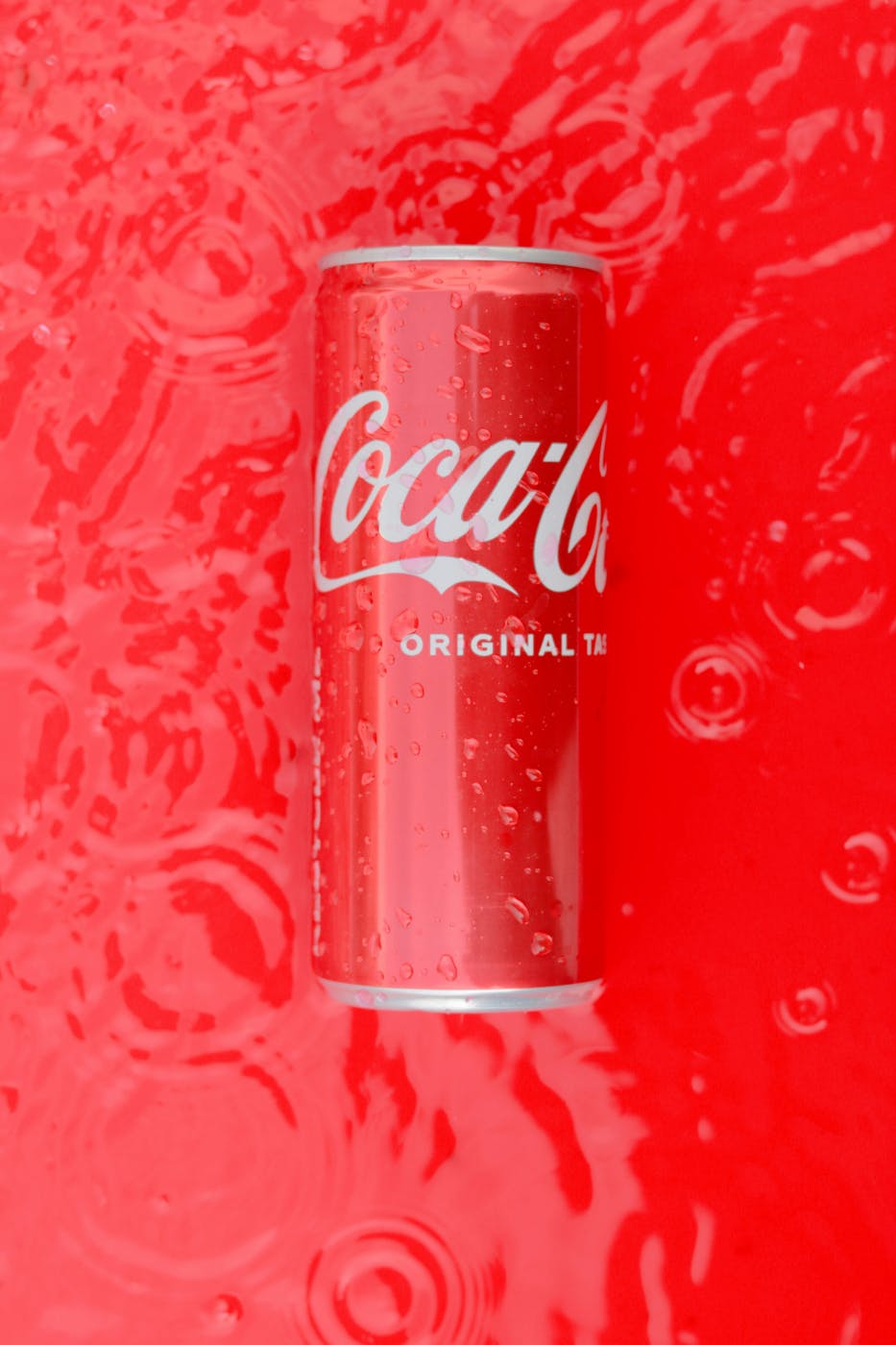
Sometimes a new logo or updated color palette is all you need to feel fresh again—a quick polish to show the world you're still paying attention. But other times, the problem runs deeper.
Fashion escapes me. No, correction, fashion avoids me. Style mocks me from around street corners, and a sense of self avoids me like the plague. I’m certainly not going to end up on any best-dressed lists, nor will I ever be the focus of some magazine spread about the stylish and fashionable.
I rarely date—not because I hate dating, but because I know that if I get involved with a woman, she will inevitably make comments about my clothes and eventually drag me to my closet and demand a full redo of my wardrobe. She’ll insist I get rid of the seriously faded Spider-Man T-shirt that no longer covers my belly. She’ll hint that my shoes—two pairs, one brown, one black—are so worn and broken they look like sandals and need to be dumped. She’ll mock my lack of style and send me into an existential crisis because I have no colors in my closet. Black and brown—that’s about the size of it. Earth tones, I say. I’m an earthy guy.
She’ll say, “When was the last time you hiked, or even went outside for longer than it takes to collect your mail?”
My earthy connection is destroyed, and there I stand, looking at my harshly judged wardrobe, wondering if it's time to redo the whole look—or even get a look.
Brands go through this exact crisis.
Sometimes a new logo or updated color palette is all you need to feel fresh again—a quick polish to show the world you're still paying attention. But other times, the problem runs deeper. Your messaging doesn’t match your mission anymore. Your audience has changed, or maybe you’ve changed. And that’s when a simple touch-up won’t cut it. That’s when it’s time to ask the big question:
Do we need a refresh—or a full rebrand?
What’s the Difference Between a Refresh and a Rebrand?
Now, just because your Spider-Man T-shirt has seen better days doesn’t mean you need to burn down your entire wardrobe and start shopping exclusively at sleek Scandinavian boutiques. Sometimes, a few key updates will do the trick. The same goes for brands.
A brand refresh is like trimming the hedges, repainting the shutters, maybe swapping out the welcome mat. The house is the same—it’s just more presentable. In branding terms, a refresh might include:
- Updating your logo or visual identity
- Refining your messaging or tone
- Refreshing the website layout
- Rolling out new packaging
It’s still you, but cleaned up, more aligned with the times, and hopefully more appealing to the people walking by.
A rebrand, though? That’s calling in the demo crew. You’re not just replacing fixtures—you’re questioning the entire floor plan. It’s what you do when you realize the structure no longer fits the life (or business) you’re living.
A rebrand typically means:
- A new name or identity
- A redefined mission or vision
- A different audience, or a better understanding of your current one
- A total shift in tone, style, or offering
It’s the kind of move you make when “a new shirt” won’t fix the problem. You’ve changed. The world has changed. And you need your brand to reflect that transformation in a real, strategic way.
The tricky part is knowing which one you actually need. Because going too big when a small fix would do? That’s overkill. But slapping on a new coat of paint when the foundation’s cracked? That’s just postponing the collapse.
And that’s where we’re headed next.

When You Need a Brand Refresh
Not every wrinkle needs Botox. Sometimes, your brand just needs a little moisturizer.
A brand refresh is the right move when the core of your business is still solid, but the exterior is starting to feel a little stale, dated, or disconnected from your current audience. You’re not changing who you are; you’re just reminding people why they liked you in the first place.
Here are some signs you might need a refresh:
- Your visual identity feels outdated (think gradients from 2007 or fonts that scream “we still fax things”)
- You’ve grown, but your messaging hasn’t evolved with you
- Your website or marketing materials look inconsistent or off-brand
- You’re attracting the right kind of customer, but your presentation is lagging behind
- You’re embarrassed to send someone to your homepage (and you pretend it’s “under construction”... again)
A good refresh realigns your outward presence with your current identity and ambitions. It’s not about chasing trends—it’s about clarity, consistency, and confidence.
Think of it like getting your act together before a high school reunion. You don’t need to become someone else—you just want to show up as the best version of who you already are.
But sometimes, a shower and a haircut won’t cut it. Sometimes you realize the person you were in high school isn’t the person you are now. You’ve changed. Your goals have changed. And showing up in your old letterman jacket just makes it harder for people to see who you’ve become.
That’s when it’s time to stop refreshing and start rethinking everything.
When You Need a Full Rebrand
There comes a point when dusting off the brand isn’t enough, because the problem isn’t dust. It’s the fact that you’ve outgrown the story you’ve been telling.
A full rebrand is what happens when evolution meets intention. It’s not reactive—it’s strategic. You’re not just updating your look; you’re updating your identity. You’re deciding that the old framework no longer fits who you are, what you do, or who you serve.
Here are some signs it’s time for a full rebrand:
- Your business model has significantly changed (new offerings, mergers, pivots)
- You’re targeting an entirely different audience than when you started
- You’ve outgrown your original name or look, and it's now holding you back
- You’re battling outdated perceptions that no longer reflect your value
- Internally, no one agrees on what the brand actually is anymore
This isn’t about aesthetics. It’s about alignment.
A brand isn’t just how you look—it’s how you show up. It’s how your team talks about what you do when no one’s listening. It’s how your customers describe you to someone else. And when those things are out of sync—when the story you’re telling on the outside doesn’t match who you are on the inside—you create confusion. Not just for your audience, but for your employees, your partners, your entire organization.
That kind of misalignment has real costs. It leads to disjointed messaging, inconsistent experiences, lost trust, and missed opportunities. People stop knowing what you stand for. Worse—they stop caring.
Rebranding is about realigning your internal truth with your external presence. It’s a chance to say, “Here’s who we really are now,” and then build everything—your voice, visuals, actions—around that truth.
Done well, it doesn’t just look different. It feels inevitable.
Because if a refresh is a new coat of paint, a rebrand is pulling out the blueprints and asking:
“What kind of house do we want to build now?”

The Risk of Getting It Wrong
Brand changes are exciting. They feel like progress, like momentum. But they also come with risk, especially when you misjudge the depth of the problem.
Go too shallow when the problem is deep, and you end up with a fresh coat of lipstick on something fundamentally broken. Go too deep when all you needed was a polish, and you risk alienating loyal customers, confusing your team, and spending a whole lot of time and money on something that didn’t need fixing.
Plenty of brands have stumbled by mistaking one for the other.
Remember Gap’s infamous logo change in 2010? A textbook refresh gone wrong. They swapped their iconic blue box logo for something new, without changing anything else about their brand. The backlash was instant. Customers hated it. The new design was pulled after just six days. The problem wasn’t the logo—it was the fact that nothing else changed with it. The refresh didn’t feel aligned with any deeper transformation, so it came off as hollow and unnecessary.
On the flip side, Tropicana’s 2009 rebrand went all in. New logo, new packaging, new everything. And in doing so, they accidentally erased all the familiarity and trust their brand had built. Sales dropped by 20% in just two months, costing the company over $30 million. They reverted quickly, but the damage had already been done. The brand had changed so much that people didn’t even recognize it anymore.
The lesson? Change without context is just chaos.
Before you do anything—whether it’s a subtle refresh or a full-scale rebrand—you need to understand why you’re doing it, who it’s for, and how it supports where you're headed next. Because getting it wrong doesn’t just look bad—it can actually set you back.
How to Decide What You Actually Need
By now, you might be nervously eyeing your own brand, wondering whether it’s time for a few updates—or a full identity intervention. This is where the panic usually sets in. People start tinkering. They change a font. Add a tagline. Maybe launch a social media campaign hoping it’ll all magically align.
But this isn’t the time for guesswork. It’s time for clarity.
Forget the logo for a second. Forget the colors. The better question is:
Are we telling the truth about who we are—and does anyone care?
Here are some deeper questions to ask before you pick up the paintbrush or the blueprint:
- Has our audience changed—or have we? If you're reaching new people, entering new markets, or if your values have evolved, your brand needs to reflect that. Clinging to who you used to be won’t help you connect with who you serve now.
- Do people “get” what we do at a glance? If your business has become a PowerPoint presentation just to explain, your brand isn’t doing its job. That might mean a simple messaging refresh or a full rebrand if your positioning is off-target.
- Are we still proud of how we show up? If your team cringes at your website or your sales deck feels like a group project from 2014, that’s a sign. Your brand should reflect where you’re headed, not where you’ve been.
- Are we attracting the right customers—or repelling them? Misalignment between your brand and your ideal audience isn’t just cosmetic—it’s expensive. Wrong-fit customers waste resources, time, and energy.
- Do we sound like us—or like everyone else? If you’ve started to blend into a sea of generic mission statements and buzzwords, your differentiation has eroded. A refresh might sharpen your edges, but a rebrand might redefine your place entirely.
- Does our team have a shared story to tell? If your internal people can’t clearly articulate who you are and why you matter, your brand has already lost something. And if that story doesn’t inspire from the inside out, it won’t connect with anyone else.
What you’re looking for isn’t perfection—it’s alignment. You want your brand to reflect your truth, your vision, and your values. That might mean a strategic tune-up. Or it might mean tearing it down to rebuild something stronger, clearer, and more you.
And if you're still unsure, that's okay. You're not supposed to have all the answers. But you are supposed to ask the right questions. Because guessing? That's how brands get stuck in between—neither fresh nor reimagined, just vaguely unsettled.
So, what’s next?
Let’s talk about where a smart rebrand or refresh can actually take you—and how to do it right.

The Power of Doing It Right
If a brand is a promise, then a good rebrand or refresh is the moment you recommit to keeping it.
When done right, a refresh can breathe new life into a tired presence. It reminds people you're still here—and still relevant. It can sharpen your voice, modernize your look, and signal to the world that you’re paying attention. It’s respectful of your past, but optimistic about your future.
When done right, a rebrand can do something even bigger:
It can reposition your entire business. Open new markets. Reignite your team. Shift how customers perceive your value. It’s not just about recognition—it’s about resonance. Suddenly, people get you. They connect with what you’re saying, what you’re selling, and what you stand for. And internally? A great rebrand aligns your culture, clarifies your purpose, and gives everyone the same flag to rally behind.
But doing it right doesn’t mean doing it alone. It takes perspective, process, and a team that knows how to turn insight into identity. That’s where strategy meets story. That’s where the real work begins.
Summing Up: What Story Are You Really Telling?
Whether you're rethinking the typeface on your homepage or reconsidering the name on the front door, the real work of branding isn’t cosmetic—it’s existential. You’re not just asking what you look like. You’re asking: Who are we now? Who do we want to become? And what will it take to get there?
At ThoughtLab, that’s where we do our best work.
We don’t just make things look good. We make sure they make sense. We help brands bridge the gap between how they see themselves and how they’re seen. Between their values and their voice. Between their ambitions and their audience.
Whether you need a refresh to reflect who you’ve become or a rebrand to signal a bold new direction, we help you find clarity before you commit. That means digging deep into your purpose, your position in the market, and the perceptions you're carrying—then helping you align every outward signal with your inward truth.
Sometimes that means tightening up a visual system or refining your messaging. Other times, it means rebuilding from the ground up. Either way, we walk with you, not just to make a change, but to make the right one.
We’re not here to create noise. We’re here to create meaning. Because when your brand is aligned—internally, externally, emotionally, and strategically—everything moves more smoothly. Sales. Team morale. Customer trust. Long-term growth.
That’s the power of getting it right.
Open Question
What signals—internal or external—are telling you it might be time for a change?

